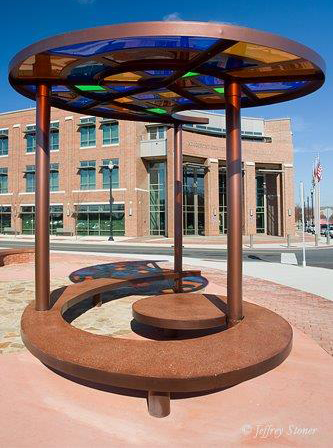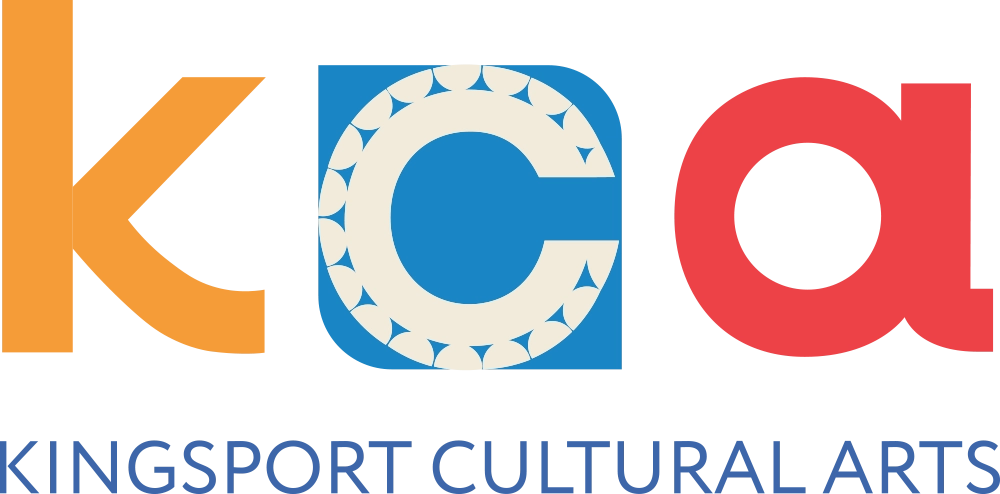Downtown Kingsport is the setting for the majority of the city’s outdoor sculptures crafted by local and national artists from a variety of fascinating materials.
Downtown Kingsport
Sculptures
“BIRDS OF A FEATHER” By Patti Lawrence, Kingsport Center for Higher Education
"Birdwatchers" By Gregory Johnson, Corner of Market and Shelby Streets
"FOUR ELEMENTS" By Hanna Jubran, Roundabout at Broad and Market Streets
"KAVANAGH HIMSELF" By Jim Collins, Downtown Kingsport Parking Garage
"LEARNING CURVE" By Lynn Basa, Outside of the Kingsport Center for Higher Education
Musical Benches By Cindy Saadeh and Appalachian Ironworks, Downtown Kingsport Parking Garage
"QUINN" By Trace O'Connor, Fountain in Glenn Bruce Park
Murals
V.O. Dobbins Community Center
The V.O. Dobbins Community Center showcases stunning murals and a variety of outdoor sculptures.
Sculptures
Murals
Kingsport Area
Kingsport is a gallery of inspiration. From captivating sculptures to vibrant murals, every corner unveils a masterpiece waiting to be discovered.
Sculptures
"PORTAL" By Mike Roig, Corner of Sullivan and Main Streets
"ROOSTER AND RACING HORSE" By Noelio Gonzalez, Kingsport Farmers Market
"SKY WEDGE" By Glenn Zweygardt, Roundabout at Gibson Mill Road and Stone Drive
"TILTED" By Jack Rolston, Renaissance Arts Center
"VOYAGER" By Glenn Zweygardt, Meadowview Resort
"YO-YO'S MUSE" By Mike Roig, Roundabout at Watauga Street & Gibson Mills Road
Murals
Kingsport Carousel
Inside the Pal’s Roundhouse, you’ll find a vintage, menagerie-style carousel with more than 30 hand-carved animals ready to take kids on a spin for just a dollar per ride.
Click here to for operating times and rental information for the Kingsport Carousel.
Traffic Control Boxes
Young artists from Dobyns-Bennett High School have made bland traffic control boxes around the city far more interesting with colorful, vibrant paintings!
Traffic Control Boxes
The Learning Curve
“Learning Curve” was commissioned by the Public Art Committee and executed through a partnership with Kingsport Tomorrow. Lynn Basa from Chicago, Illinois, is the lead artist and designer. The site-specific work provides benches and a shade canopy along a curving and expanding path. Materials used in production of the piece reference the traditional materials manufactured in Kingsport including brick and concrete. The bricks for the piece were repurposed from several buildings of the historic Kingsport Press. The shade canopy features Eastman Chemical Company’s latest monomer Tritan in vibrant hues of blue, yellow, and orange. The shade canopy casts a shadow on the surrounding area as the sun shines through. The pattern of the canopy reflects the historic design of Kingsport’s center of town as designed by planner John Nolen in 1917. Likewise the paving pattern in the sidewalk plaza references the path of education leading to broadened horizons. The installation was completely crafted by Kingsport artists including Appalachian Ironworks, Limestone Masonry, and Solid Living Design.

In her proposal, Lynn Basa commented, “Materials are symbolic, that’s why, for Kingsport, I would like to create an artwork that weds the town’s past with its present and future. One of the first things that clued me in to the fact that Kingsport was no ordinary small town was when I came upon the 1919 street plan [designed by John Nolen], as elegant and rational as any world capital. As I researched further, it became evident that a direct line can be drawn between the strategic thinking of Kingsport’s leaders 100 years ago in creating the country’s first modern industrial town plan and the 2001 ‘Educate and Grow’ initiative as a solution to the changing economy – well in advance, it should be noted, of today’s economic crisis.” Basa has designed public art projects throughout the United States including “The Great Circle Route,” terrazzo, ceramic mosaic, and fiber art in the Indianapolis Airport; the Glendale, Arizona History Walk, glass mosaic; the Grove Mosaic and Shade Canopy, glass mosaic and laser-cut aluminum; among many others. Basa is also the author of “The Artist’s Guide to Public Art” and is a regular instructor for the School of the Art Institute of Chicago.
The Kingsport Public Art Committee was able to announce completion of this public art installation piece in 2010, through Kingsport’s Percent for Art for the Kingsport Higher Education Center and surrounding Academic Village. Location: the corner of Clay and Market Streets and at the Kingsport Higher Education Center.

Renaissance Arts Center & Theatre
1200 E. Center St. Kingsport TN 37660
(423) 392-8414
Home
Events
Create
Look
Engage
